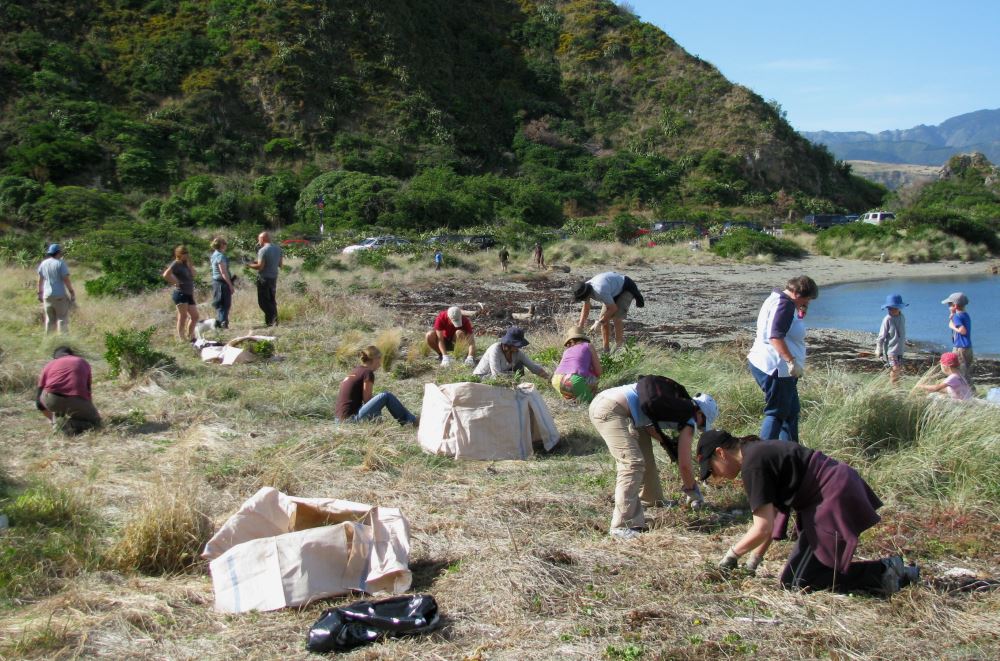Little blue penguins

The Miramar Peninsula coastline is one of the few places where little blue penguins live close to people. They live among the busiest beach properties, around Seatoun and Karaka Bay, but also Fort Dorset, Tarakena bay, Kau and Mahanga Bays to the north.
The arrival of people, and with them other animals, has not been good for our little blue penguins. Now they are in decline. Beach houses, roads and fences have taken over their territory and since they are often noisy and smelly they are not always popular neighbours.
About the little blue penguin
The little blue penguin (Eudyptula minor), or korora, is the world’s smallest penguin, reaching just over 30 cm. They spend most of their days feeding out at sea, returning to their nests and burrows just after dusk. During parts of the year they stay in their nests for roosting or moulting.
Little blues nest in underground burrows, under vegetation, in cracks between rocks, boast sheds and sometimes under houses. Usually, they lay two eggs in springtime and, once hatched, chicks are tended to for about eight weeks until they can look after themselves. Once the chicks have left the nest, the adult birds stock up on food and go into moult, growing new feathers for a waterproof coat. During this time, which usually lasts for two weeks and runs between November and March, the penguins look almost sick and are especially vulnerable while limited to the land. During this time it’s really important to keep your dog on a tight leash on the beach and by surrounding cliffs and vegetation.

What can I do to help little blue penguins?
- Keep your dog on a leash at the beach.
- Make sure your cats and dogs stay in at night, especially between November and March.
- Drive slowly around the coastline, especially at dusk and dawn. Penguins often have to cross roads to get from the sea to their nest and burrows.
- Make sure your rubbish, especially plastic, does not end up in the sea as penguins might swallow or become entangled in it.
- Don’t pour chemicals down drains, or wash your cars near gutters or drains as they will end up in the sea.
- Join Places for Penguins (see below).

How can I relocate a noisy penguin?
Note, it is illegal to catch native birds, and attempt to relocate them. In the case where an animal is obviously ill or injured, contact the DOC rangers on the DOC hotline: 0800 DOCHOT (0800 362 468).
If you’re lucky enough to have a penguin living under your house, but feel that your new tenant is too noisy or messy please wait for a safe time to block them out. The best time is late March or April before the breeding season starts. Make sure you do not separate any chicks from parents, or expose moulting birds to predators. Also make sure that the burrow is empty, and no penguins are home while blocking. You don’t want a dead penguin under your house.
Forest & Bird’s Places for Penguins
‘Places for Penguins’ is a Forest & Bird project aiming to reverse the population decline of little blue penguins in Wellington. The project promotes conservation and improves, restores and conserves coastal habits around Wellington and the Miramar Peninsula. Some of the work includes installing and monitoring nestboxes on the seaward side of roads and pest control of rats, mustelids and hedgehogs.
More information at Forest & Bird.



